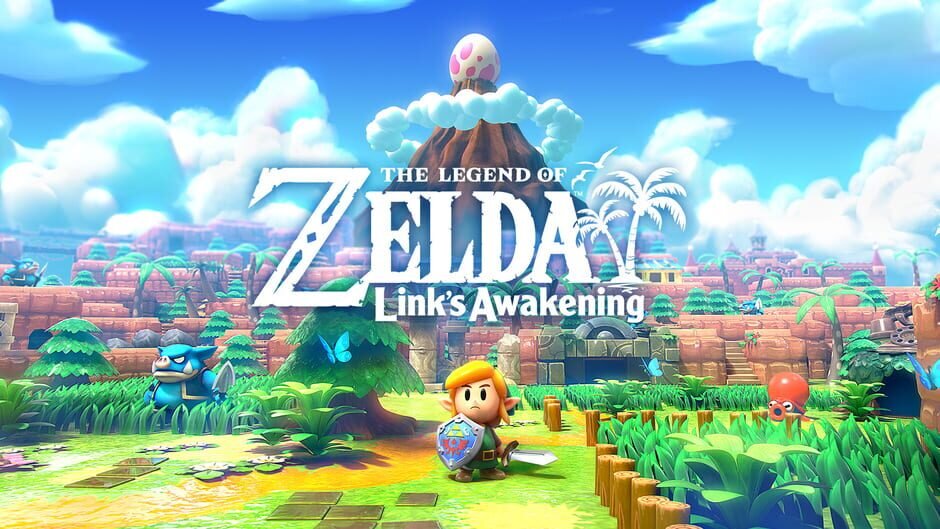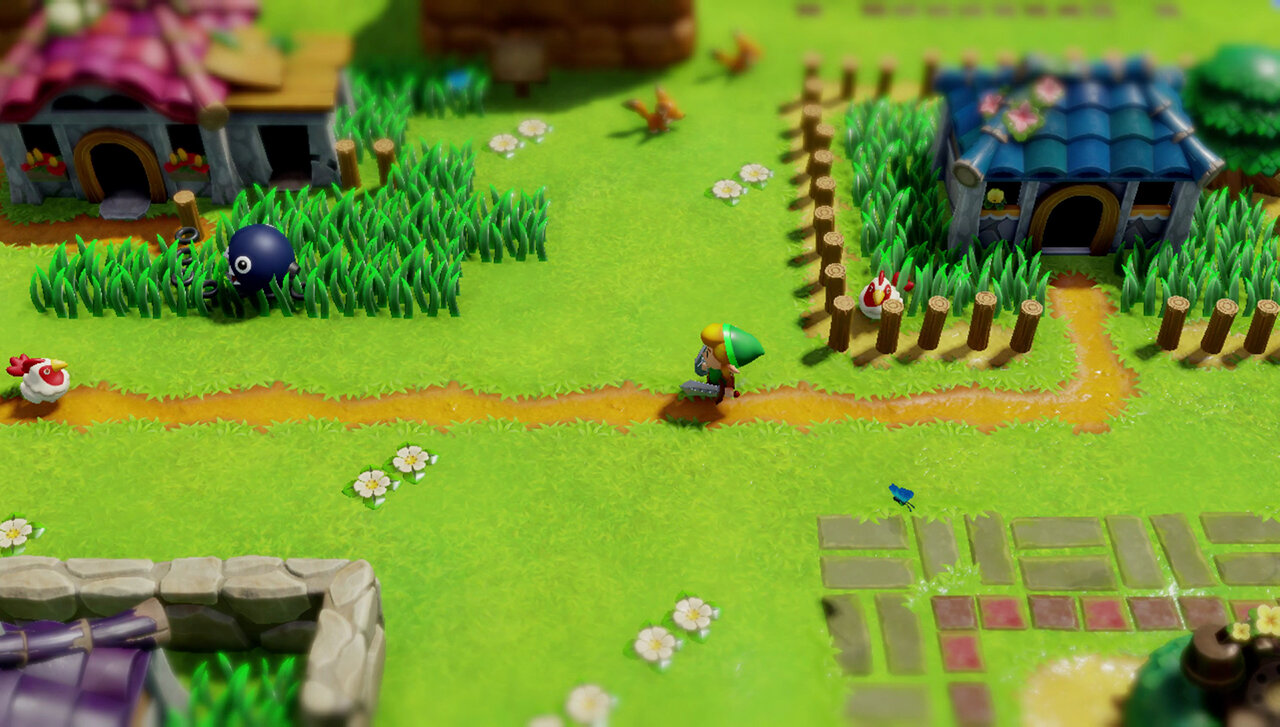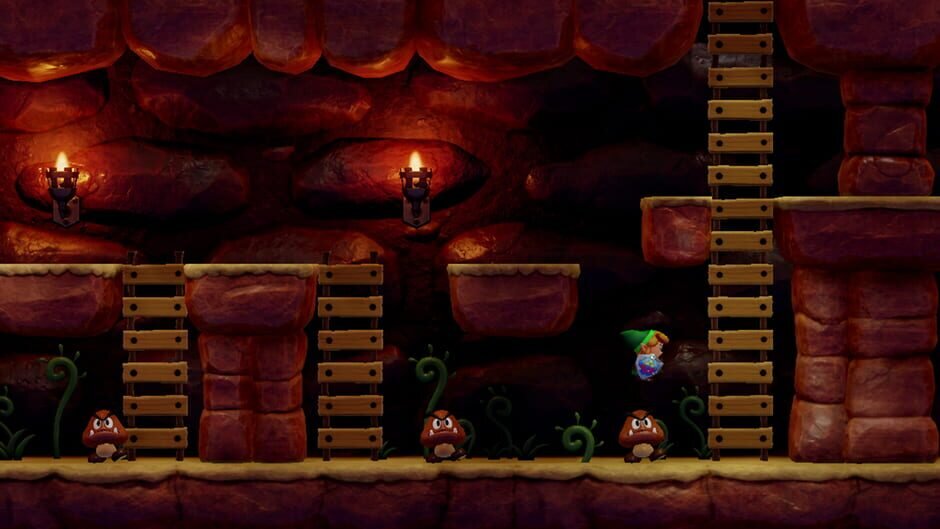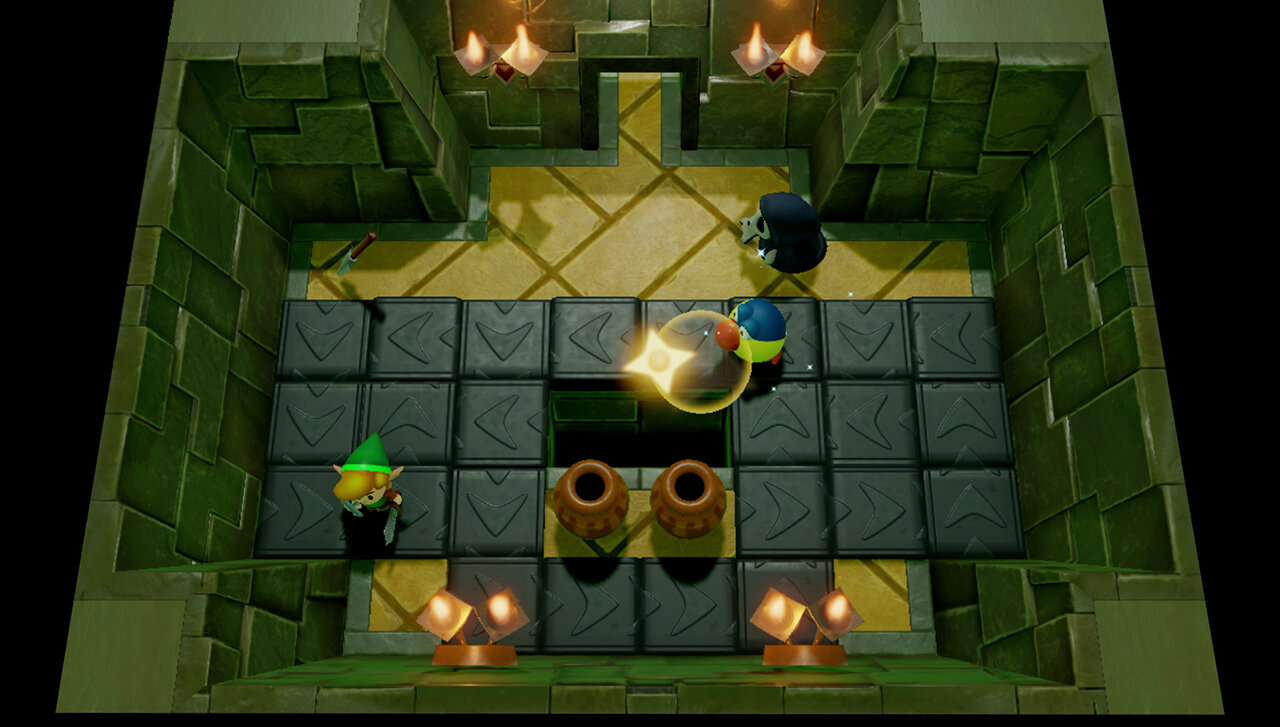The Legend of Zelda: Link's Awakening (2019) review
At the time this game was announced, with its genuinely cool anime opening video serving as the game's reveal trailer, I was excited. Link’s Awakening on the Game Boy was a beloved classic, with a soundtrack so nostalgic, it haunted most 90’s kids' dreams. It had even been remade already once before (as The Legend of Zelda: Link's Awakening DX for the Game Boy Color), and had served as the basic template for two more GBC Zelda games: Oracle of Ages and Oracle of Seasons.
If you wanted to take an older Zelda title and update it for the new generation, choosing Link’s Awakening made a lot of sense. (Though I might argue that the Zelda game most deserving of a modern makeover is actually Zelda II: Adventure Boogaloo, but I digress….) And then there was the fact that the game was being developed by Grezzo, the studio who had previously made the excellent Ocarina of Time 3D and Majora’s Mask 3D remakes on the 3DS. They also made Tri Force Heroes, but hey, nobody’s perfect. One could certainly assume that the latest Zelda remake was in very capable hands.
However, when I first sat down to play the Link's Awakening remake, I ended up being very distracted by some glaring performance issues. The game seemed to glitch slightly whenever it loaded a new area of the overworld. Slowdown was prevalent anytime something fairly complicated was rendered on screen. And the Goponga Swamp area in particular, with its fog and water effects, would cause the frame rate to tank horribly.
Suddenly, the sure bet of remaking an old Game Boy game for the Nintendo Switch appeared to have backfired spectacularly. The original game’s pixel art, ancient and antiquated as it may be, is still rather appealing today. And the chiptune soundtrack is beloved for a reason, it remains a universal crowd-pleaser. There’s brilliance in the old game’s simplicity, like the distillation of childhood joy.
So how does Nintendo—well Grezzo, really—distinguish their title from the original work, and justify its $60 price tag? (Wait...this remake of a 26-year-old original Game Boy game—which again, was already remade once before—is priced as high as possible, with the same cost as Breath of the Wild? That’s a bold decision.) Well, they give it shiny new 3D graphics of course! And an orchestral score too. Surely the flair of modern audio/visuals will make all the difference.
And then somehow, they inexplicably forgot to optimize the game’s performance for Switch? WTF?! That would be inexcusable on its own, but it’s doubly embarrassing when the original game, or its first remake, offers a better experience. (Especially when those games cost a fraction of the price.)
Having recently returned to play the Switch rendition again, however, I am happy to report the performance issues are not nearly as bad as I remember. I suspect the game may have received a patch, or perhaps a Switch system update quietly implemented improvements, because none of the issues which had previously been horribly jarring jump out at me anymore. Sure, the frame rate still takes an occasional dip in the overworld, but it’s no longer an irritant of the “cannot unsee” severity.
And that’s good, because Link’s Awakening is a damn fine Zelda in any of its many forms.
The 3D toy box-esque art style used in the Switch remake is actually quite adorable; not a bad choice for re-envisioning an 8-bit classic. And it translates the original pixel art quite faithfully, almost literally even. Now when exploring the overworld, there is an omnipresent camera blur around the edges of the screen, kinda like someone greased the lens. This is one of those visual flourishes Grezzo has done to make the game really pop, I suspect. Unfortunately though, it’s a bit annoying and frankly unnecessary. Luckily you stop noticing it after a while.
The orchestral arrangement of the Game Boy game’s chiptune music is genuinely exceptional. Played on real (or at least realistic-sounding) renaissance instruments, these classic 8-bit melodies lose none of their charm in the new format. In fact, some tracks—like the frantic tune which kicks in when you pick up a Piece of Power or a Guardian Acorn—are greatly improved by the more subdued musical style. While I would have cried heresy for changing the classic tunes, the orchestral soundtrack is actually the remake’s strongest selling point.
While the remake’s visuals are fine and the music is awesome, the game is much more limiting in control options than I think it should be. For example, the remake allows you to use the shield to block with the R Button, but this is the only time it uses the shoulder buttons at all. Use of Link’s sword must be assigned to the B Button—which isn’t even the right button!—and this cannot be changed. I want to assign the sword to the Y Button, like you know, where every other Zelda game would put it, but that’s not allowed.
Next, this game limits you to equipping only two items at once: one tool to Y and one tool to X. But why though? There are four face buttons and four shoulder buttons to work with here, yet only two buttons can be freely assigned. Especially when you consider that the original game gave you free rein to mix & match items as you wish, using a far more limited button layout—plus, it let you unequip the sword and shield at any time. Why doesn’t this remake provide more flexibility?
Finally, this game forces you to control Link with the Thumbstick, for seemingly no reason. You cannot control Link using the directional buttons/D-pad. Why? That’s not being used for anything, so what’s the difference? Why didn’t the developers make this game easier to play however you would like?
Dampe is such a backseat Dungeon Master.
Another feature added to this remake, and one that’s unfortunately disposable, is the inclusion of “Chamber Dungeons”. By visiting Dampe’s Shack—that’s creepy Dampe the gravekeeper, by the way—Link can mix and match dungeon chambers he’s played through during his adventure to create new custom dungeons. By making your own dungeons for Dampe, you can collect rewards such as a Heart Container or Rupees. But the real fun was thought to be in sharing your creations with your friends.
You see, players have been begging Nintendo for a Super Mario Maker-style Zelda game for some time—a “Super Zelda Maker”, if you wish—and Chamber Dungeons is basically the developers dipping their toe in to test such a concept. However, as it’s been executed here, the feature is a far cry from anything even remotely resembling what Zelda fans want.
For one thing, the level of customization available in Chamber Dungeons is so meager, it’s basically nothing when compared to a full game like Super Mario Maker. Next, while your custom dungeons are technically shareable with other players, Nintendo has made the sharing process as stupidly arduous as possible. In order to share your completed dungeon with a friend, it needs to be saved to an amiibo and then your friend has to physically scan that amiibo onto their Switch. OH, and it needs to be a Legend of Zelda amiibo too! Don’t you dare try saving a custom Zelda dungeon onto your Dr. Mario Smash Bros. amiibo, you absolute maniac!
I think it’s fair to say that basically no one is using the Chamber Dungeons feature. And that’s probably just what Nintendo had intended.
To wrap up, I want to clarify that The Legend of Zelda: Link's Awakening is a fantastic game, well worth playing in any of its many iterations. It’s just so weird and quirky, goof and charming, a near-perfect video game fairytale.
And the Link’s Awakening remake on Nintendo Switch is fine. The visual aesthetic is fun, the orchestrated music is fantastic, and the overall experience is more than competently executed. (Although things looked pretty dicey on that front until recently.) Is the Switch version worth $60? Nah, probably not. But if you can manage to find it on sale, or a used copy, or someone gives it to you for Christmas, the magic is still alive and well in this one.







